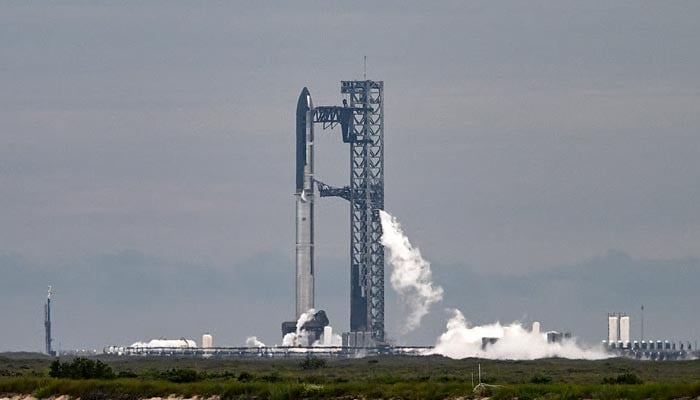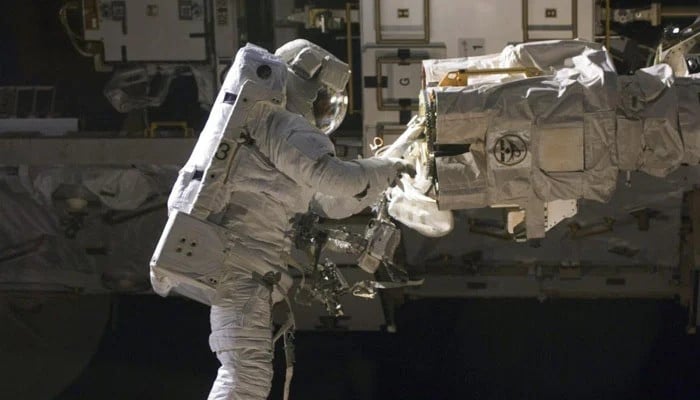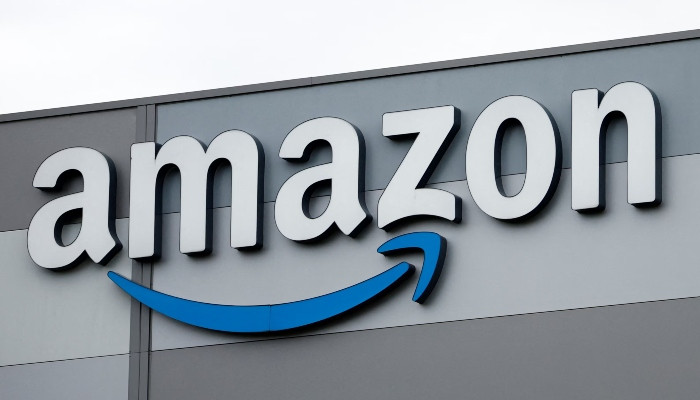SpaceX delayed a planned test flight for his Starship Megarocket by 24 hours to Monday, and said it needed time to solve problems, in the last setback for Elon Musk’s Kolos after a series of explosive failures.
The recent problems have led some observers to doubt whether the world’s largest and most powerful launch vehicle will be able to bring people back to the moon – or to reach musk’s dreams about colonizing mars.
The rocket was planned to shoot Local Time (2330 GMT) on Sunday on Sunday on his tenth flight from the Starbase of the company in Zuid -Texas.
However, about 15 minutes before the launch, SpaceX scrubbed the flight, which is a relatively common event for spatial launches.
“Reduction of the tenth flight of today’s starhood to give time to solve a problem with soil systems,” said it on X.
Musk later placed on the same platform that a “liquid oxygen leak must be fixed from the ground side.”
SpaceX said it was the launch for “as soon as” planned on Monday on Monday, although it warned that the timing was still “dynamic and probably changed”.
Road closures near Starbase indicated that Tuesday was also made available for a possible attempt.
The one -hour mission was planning to place the upper stage of the rocket by placing a series of trials before the lower stage booster splashed in the Indian Ocean.
Series of explosions
Starship is central to the founder of the billionaire SpaceX founder Musk’s ambition of Colonization Mars, while NASA counts on an adapted version to bring Americans to the moon.
However, the upper stage of the rocket – the spacecraft that is intended to wear crew and charge – was exploded in all three previous test flights in 2025.
Two of the failed tests sent debris that rained over the Caribbean islands, while the other space reached before they separate. Subsequently, another top phase exploded on the ground in June during a “static fire” test.
The rocket of 403 feet (123 meters) is designed to eventually be fully reusable, but the company has not yet succeeded in getting the upper phase to give a payload to space or return to the launch site.
After an investigation into the previous failed flight in May, SpaceX said that “deliberately emphasizes the structural boundaries” of the upper phase, hoping to sound a successful return.
SpaceX has succeeded in catching the lower booster with gigantic “chopstick” launch tower weapons three times, but the tenth flight will not try the performance.
The company “Fail Fast, Learn Fast” Ethos has long been credited with its remarkable track record, giving the American company a commander global lead in Lancings thanks to the Falcon Rocket family.
But the setbacks of the starry have evoked doubts about whether the company can repeat that success with the greatest rocket in history.
‘A lot of pressure’
Dallas Kasaboski, a space analyst for consultancy Analysys Mason, told AFP for the rearrangement launch that the recent failures began to take the shine of SpaceX’s golden reputation.
“I think there is a lot of pressure on this mission,” he said. “We have had so many tests and it has not been reliable – the successes have not exceeded the failures.”
Will Lockett, a former engineer who became a commentator, continued and argued on his substituet newsletter that failure of the rocket to deliver a load into a job to still deliver, but suggested: “The concept of spaceship is fundamentally inadequate.”
Musk, the world’s richest man, has used the future of the company on the spaceship and is planning to eventually retire his current generation of rockets and spacecraft in favor of the new system.
Even if the tenth test finally succeeds, formidable technical obstacles of the system continue to make it completely and quickly reusable at low costs to prove that it can refuel super cooled drive gas in a job, a condition for deep space missions.
Nevertheless, SpaceX pushes forward, which increases the frequency of launches, despite criticism from environmental groups due to ecological effects.






